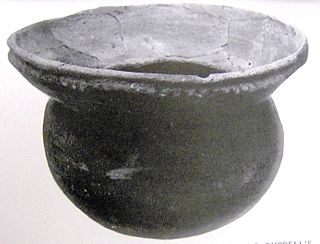
Knoxville is a city in and the county seat of Knox County, Tennessee, United States. As of the 2020 United States census, Knoxville's population was 190,740, making it the largest city in the East Tennessee Grand Division and the state's third largest city after Nashville and Memphis. It is the principal city of the Knoxville metropolitan area, which had a population of 879,773 in 2020.

Oak Ridge is a city in Anderson and Roane counties in the eastern part of the U.S. state of Tennessee, about 25 miles (40 km) west of downtown Knoxville. Oak Ridge's population was 31,402 at the 2020 census. It is part of the Knoxville Metropolitan Area. Oak Ridge's nicknames include the Atomic City, the Secret City, and the City Behind the Fence.

The University of Tennessee at Martin is a public university in Martin, Tennessee. It is one of the five campuses of the University of Tennessee system. UTM is the only public university in West Tennessee outside of Memphis.

The University of Tennessee system is a system of public universities in the U.S. state of Tennessee. It is one of two public university systems, the other being the Tennessee Board of Regents (TBR). It consists of four primary campuses in Knoxville, Chattanooga, Pulaski and Martin; a health sciences campus in Memphis; a research institute in Tullahoma; and various extensions throughout the state.

Nikwasi comes from the Cherokee word for "star", Noquisi (No-kwee-shee), and is the site of the Cherokee town which is first found in colonial records in the early 18th century, but is much older. The town covered about 100 acres (40 ha) on the floodplain of the Little Tennessee River. Franklin, North Carolina, was later developed by European Americans around this site.

Kituwa or giduwa (Cherokee:ᎩᏚᏩ) is an ancient Native American settlement near the upper Tuckasegee River, and is claimed by the Cherokee people as their original town. An earthwork platform mound, built about 1000 CE, marks a ceremonial site here. The historic Cherokee built a townhouse on top that was used for their communal gatherings and decisionmaking; they replaced it repeatedly over decades. They identify Kituwa as one of the "seven mother towns" in their traditional homeland of the American Southeast. This site is in modern Swain County, North Carolina, in the Great Smoky Mountains.

Toqua was a prehistoric and historic Native American site in Monroe County, Tennessee, located in the Southeastern Woodlands. Toqua was the site of a substantial ancestral town that thrived during the Mississippian period. Toqua had a large earthwork 25-foot (7.6 m) platform mound built by the town's Mississippian-era inhabitants, in addition to a second, smaller mound. The site's Mississippian occupation may have been recorded by the Spanish as the village of Tali, which was documented in 1540 by the Hernando de Soto expedition. It was later known as the Overhill Cherokee town Toqua, and this name was applied to the archeological site.

Tomotley is a prehistoric and historic Native American site along the lower Little Tennessee River in Monroe County, Tennessee, in the southeastern United States. Occupied as early as the Archaic period, the Tomotley site was occupied particularly during the Mississippian period, which was likely when its earthwork platform mounds were built. It was also occupied during the eighteenth century as a Cherokee town. It revealed an unexpected style: an octagonal townhouse and square or rectangular residences. In the Overhill period, Cherokee townhouses found in the Carolinas in the same period were circular in design, with,

Citico is a prehistoric and historic Native American site in Monroe County, Tennessee, in the southeastern United States. The site's namesake Cherokee village was the largest of the Overhill towns, housing an estimated Indian population of 1,000 by the mid-18th century. The Mississippian village that preceded the site's Cherokee occupation is believed to have been the village of "Satapo" visited by the Juan Pardo expedition in 1567.
The Pisgah phase is an archaeological phase of the South Appalachian Mississippian culture in Southeast North America. It is associated with the Appalachian Summit area of southeastern Tennessee, Western North Carolina, and northwestern South Carolina in what is now the United States.

Bussell Island, formerly Lenoir Island, is an island located at the mouth of the Little Tennessee River, at its confluence with the Tennessee River in Loudon County, near the U.S. city of Lenoir City, Tennessee. The island was inhabited by various Native American cultures for thousands of years before the arrival of early European explorers. The Tellico Dam and a recreational area occupy part of the island. Part of the island was added in 1978 to the National Register of Historic Places for its archaeological potential.
Garden Creek site is an archaeological site located 24 miles (39 km) west of Asheville, North Carolina in Haywood County, on the south side of the Pigeon River and near the confluence of its tributary Garden Creek. It is near modern Canton and the Pisgah National Forest. The earliest human occupation at the site dates to 8000 BCE. The 12-acre site features remains of two villages (31Hw7) occupied first in the Woodland period and, most prominently, in the Pisgah phase associated with the South Appalachian Mississippian culture. A total of four earthwork mounds have been found at the site; three have been excavated.

The University of Tennessee, Knoxville, is a public land-grant research university in Knoxville, Tennessee, United States. Founded in 1794, two years before Tennessee became the 16th state, it is the flagship campus of the University of Tennessee system, with ten undergraduate colleges and eleven graduate colleges. It hosts more than 30,000 students from all 50 states and more than 100 foreign countries. It is classified among "R1: Doctoral Universities – Very high research activity".
Lynne Sullivan is an American archaeologist and former Curator of Archaeology for the Frank H. McClung Museum located on the University of Tennessee campus in Knoxville, Tennessee. A graduate of the University of Tennessee (undergraduate) and the University of Wisconsin–Milwaukee, Sullivan is renowned for her research and publications on subjects such as Southeastern United States prehistory, Mississippian chiefdoms, mortuary analysis, and archaeological curation. She has been a major contributor to the feminist/gender archaeology movement through her studies in social inequality, gender roles, and the historic significance of women in the development of modern archaeology.
Madeline Kneberg Lewis (1903–1996) was an American archaeologist and professor of anthropology at the University of Tennessee. She is most famous for her work on excavations in the Tennessee Valley, beginning in the 1930s. She was instrumental in establishing the anthropology department at the University of Tennessee as well as the Frank H. McClung Museum. She was the first female full professor at Tennessee outside of home economics and among the first prominent female archaeologists in the United States.

The Freel Farm Mound Site (40AN22) is an archaeological site and burial mound of the Late Woodland period located on the Oak Ridge Reservation in Oak Ridge, Tennessee. The site was excavated in 1934 as part of the Norris Basin Survey by the Tennessee Valley Authority using labor from the Civil Works Administration under the supervision of T.M.N. Lewis. Important finds of the excavation include 17 burials and a few artifacts. The artifacts and records from the fieldwork are held by the McClung Museum in Knoxville, Tennessee.
The Freel Farm Mound Site (40AN22) is an archaeological site and burial mound of the Woodland cultural period located on the Oak Ridge Reservation in Oak Ridge, Tennessee. The site was excavated in 1934 as part of the Norris Basin Survey by the Tennessee Valley Authority using labor from the Civil Works Administration under the supervision of T.M.N. Lewis. Important finds of the excavation include 17 burials and a few artifacts. The artifacts and records from the fieldwork are held by the McClung Museum in Knoxville, Tennessee.

Too-Cowee, was an important historic Cherokee town located near the Little Tennessee River north of present-day Franklin, North Carolina. It also had a prehistoric platform mound and earlier village built by ancestral peoples. As their expression of public architecture, the Cherokee built a townhouse on top of the mound. It was the place for their community gatherings in their highly decentralized society. The name translates to "pig fat" in English. British traders and colonists referred to Cowee as one of the Cherokee Middle Towns along this river; they defined geographic groupings based in relation to their coastal settlements, such as Charlestown, South Carolina.
Hiwassee Island, also known as Jollys Island and Benham Island, is located in Meigs County, Tennessee, at the confluence of the Tennessee and Hiwassee Rivers. It is about 35 mi (56 km) northeast of Chattanooga. The island was the second largest land mass on the Tennessee River at 781 acres before the Tennessee Valley Authority created the Chickamauga Lake as a part of the dam system on the Tennessee River in 1940. Much of the island is now submerged, leaving 400 acres above the waterline.
Bennie Carlton Keel is an American archaeologist who has made contributions to the foundational understanding of Cherokee archaeology and culture, North Carolina archaeology, and to the development of Americanist cultural resource management (CRM).














